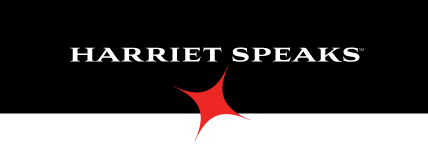When Racism Attacks Your Brand
TIKI Brand, the maker of TIKI torches, was recently thrust into the national spotlight and linked to racism. Social and news media was filled with images of individuals carrying Tiki torches and displaying the Nazi salute while chanting racist slogans. In light of these events, TIKI released a statement on social media which read:
"TIKI Brand is not associated in any way with the events that took place in Charlottesville and are deeply saddened and disappointed. We do not support their message or the use of our products in this way. Our products are designed to enhance backyard gatherings and to help family and friends connect with each other at home in their yard."
TIKI Brand’s response to this potential crisis should be replicated by other organizations of all types and sizes.
As a racial equity consultant with a background in branding and communications, I am uniquely able to provide guidance on issues where race/racism and branding/communications intersect. This is a critical skill because in a social media driven world, this brands that have taken years to build and millions to create can be destroyed overnight. Issues related to race can create problems for brands; problems that companies are typically not prepared to handle.
Be: READY!
In my work with corporate clients, I have created an acronym for how they can respond when their brand faces an actual or potential crisis related to race. It is important for companies to be ready for these types of challenges. The acronym, therefore, is “READY.” Here is what each letter in the acronym stands for, followed by an analysis of how the TIKI brand delivered:
R: Real. – The communication must be real; it must be genuine and heartfelt. Communities of color know when brands are taking an action for PR purposes. To make sure your communications are real, it is important to listen to voices in the organization (even if they are not from PR and/or Marketing) who have an opinion or perspective on the issue that is consistent with what the organization wants to say. This may require temporarily dispensing with hierarchy and silos, but it allows organizations to take full advantage of all of the thinking and life experiences its employees bring to the work.
E: Easy. – The communication should be easy to read, no jargon, no equivocating. It might seem obvious, but often when communicating about something outside of your core business (and no business wants to have to talk about white nationalism), uncertainty about how to say it can result in opaque statements that no one understands.
A: Advance. – The communication should take place as soon as possible and in advance of any questions from the public about where you stand. It should be pre-emptive.
D: Direct. – Directly reference the behavior, event, and/or action not aligned with your brand/organization. A general reference to events and/or a general condemnation is not sufficient.
Y: Your Brand. – Connect the statement to your brand. Be sure to say what you do support, what you do stand for. This is also essential to ensuring that statement is perceived as real (see the first letter in the acronym).
TIKI was R-E-A-D-Y!
(Real) By stating they were “saddened and disappointed” it was apparent that their statement was real. Not only that, but they convened sincerity and managed to humanize their company, a step that is essential when navigating a crisis.
(Easy) The TIKI statement was easy to read because of its simple language and because it was short. No one reading the TIKI statement had any confusion as to what they believe, what they think – and this was done in 3 sentences.
(Advance) On the very day the images appeared, TIKI issued their statement in advance of any public criticism. There was no delay or hesitation. This matters to historically marginalized groups who have long been accustomed to having to wait to be heard or for their concerns and/or interests to be acknowledged.
(Direct) This statement contained a specific reference to Charlottesville and explicit disapproval of “their message” and “the use of our products in this way.” It may be helpful to consider a statement that is indirect and ineffective. A general statement that stated the company’s “respect for all individuals regardless of race or religion” would not have met the “Direct” requirement.
(Your Brand) TIKI concluded their excellent statement by telling us what they stood for. They changed our mental image from one of their product was being used at a white nationalist rally to one of people getting together for an event in someone’s backyard and having a good time, accompanied by a TIKI torch. This pleasant visual and the emotions it generates stands in direct contrast to how the product was displayed in Charlottesville. Readers are left believing, “No. What happened in Charlottesville is not consistent with what this company stands for.”
Organizations can get this wrong because they either focus too much on their brand and the statement reads as if it came out of the sales department, or they don’t reference their brand at all, in an attempt to be “pure.” But, if you have properly developed your brand, it should be easy to tell how it is consistent with the values you and others hold most dear.
I remain hopeful that there can (I deliberately did not say “will” because “can” implies that it is not certain and requires effort) come a time in our nation’s history when racism no longer has the ability to harm individuals or organizations. But the truth is we are not there. In the meantime, value-driven organizations should be READY.
Jyarland Daniels, MBA, JD is CEO & Founder of Harriet Speaks℠, a racial equity and inclusion consultancy that offers training, coaching, and (crisis) communications strategies for non-profits, educational institutions, and corporations. Learn more at harrietspeaks.com.
